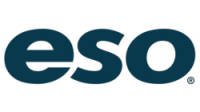“When we waste dollars through inefficient practices, we are not being good stewards to our patients, our taxpayers or to our EMS mission,” writes Jonathan D. Washko. A reliable, effective and efficient inventory management system can help an organization reduce costs, limit waste, improve employee relations and limit liability.
Learn more in the ESO-sponsored eBook, “Achieving operational efficiency”
When it comes to inventory management, size matters.
How you manage your supply and logistical workflows is usually dependent on call volume, number of stations, number of employees, supply mix complexity and budget.
Smaller organizations tend to marginalize this task onto the existing management infrastructure, meaning it is part of the job for someone who may wear many hats – this may be a line supervisor who is also a field paramedic, a fleet coordinator, a supply coordinator and a station coordinator, all rolled up into one.
On the other hand, larger organizations will typically have a dedicated department and staff to specifically handle the supply and logistical needs of the organization. The structure is typically based on the type of EMS system design you operate under – fire, private, third service, hospital, PUM, etc. – and if you are subsidized or rely purely on revenue from billings to operate.
Money matters
While size matters in terms of workflows and marginal or dedicated infrastructure, there are many common best practices that any organization can use to provide a lean, mean, supply and logistics machine.
Why is this important?
In both large and small EMS organizations, dollars count. Our ability to convert dollars into service through economic efficiency is one of the most misunderstood, yet most valued commodities that management touts as part of their mission.
Lean thinking is providing for the highest in quality, reliably and consistently, while using the leat amount of effort or resources possible to obtain that goal. It is something we all can do, whether we have one ambulance or 1,000. Some may consider these goals diametrically opposed and unobtainable, but they can be achieved through sound systems, process engineering and leveraging technology.
Knowing inventory usage, expiration dates, par levels and distribution management is key to lean process success. Learning to leverage this insight to your lean advantage is the next challenge.
Think lean
Lean process is all about minimizing the amount of time, energy, effort and money that goes into a particular mission – in this case, supply and logistics.
Thinking lean aims to, for example, recognize that a process that takes 10 steps and three hours to complete could be reduced to three steps in one hour by completely revamping how the task is managed through the organization (while improving or maintaining quality).
Take this concept and apply it to your existing supply and logistical processes. Are there things you could do to reduce waste, par levels or loss? I have yet to see a process that could not be improved in some way. It’s all about thinking differently and breaking the unwritten rules of the organization. In other words, getting out of the “we’ve always done it that way” style of thinking.
This line of thought is what gave birth to supply and logistics best practice concepts, such as speed loading, snap packs, service point inspection systems, cabinet sealing systems and more. The ideas behind these types of systems are to reduce waste, while simultaneously improving quality and reliability.
Get automated
Using technology is another important way an agency can embrace lean processes. In today’s cloud-based world, information systems that used to be out of reach for small EMS providers are now available at a fraction of the cost, and usually require little-to-no up-front capital investment to acquire.
Cloud-based systems can provide the business intelligence you need to effectively manage your inventory processes and systems – yielding lower costs through less waste and lower par levels. Inventory, scheduling and electronic patient care reporting systems can be used to track usage, manage inventory, allow for remote online ordering and track dates, all of which improves workflow and inventory intelligence.
With a new thought process and improved data about your inventory, it’s time to start designing new workflows to make the process leaner and more efficient.
For example, if you know your usage of a particular item is consistent, set up on automated ordering process for that item using reasonable par levels. If you find that an item is low-usage and quickly expires, try to target which station has a higher probability of using that item, and move it from a low-use station to a high-use station before it gets stale.
Your true usage
Also, make it a practice to determine your true usage and identify loss through auditing ePCR records that allow quantification of supplies used. For example, on reading a chart where a patient received a 12 lead and an IV, you know how many electrodes, IV catheters, IV start packs, tubing, fluids, etc. were used.
With this type of audit, you can extrapolate what your true usage is and compare it to what you are consuming. The delta between these two measurements shows what could be waste, left or poor documentation and pinpoints where opportunities for improvement may lie.
With this information, you can identify any weak spots and use lean process improvement concepts to fix what you and the data found. Thinking lean can not only improve your supply and logistic processes in an organization. It’s a concept that can be applied to all aspects of managing your organization – large and small.
This article, originally published on March 30, 2014, has been updated.




